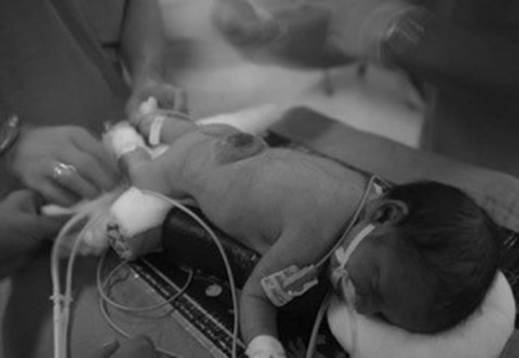Can we achieve the Sustainable Development Goals (SDGs) target of ending preventable deaths of newborns and children under 5 years of age by 2030 by ignoring one of the leading causes of childhood mortality? We are referring to birth defects. Birth defects are associated with about 13% of all childhood deaths. Globally, about 8 million children are affected; the majority of them are in developing countries. Not taking action on birth defects prevention and care is indeed a missed opportunity in the SDG era.
March 3, 2018 is World Birth Defects Day (#WorldBDDay). The day was launched in 2015 to stimulate a public discourse about birth defects because even after the 63rd World Health Assembly Resolution in 2010 calling upon nations to accelerate prevention and care, action on birth defects has been cursory. So, on the eve of the 4th World Birth Defects Day, we want to bring birth defects to the forefront of the issues that are considered for improving the health of women and children. Those of us who advocate for improving reproductive, maternal, newborn, child and adolescent health (RMNCAH) need to talk about birth defects. Our conversations need to highlight challenges and successes.
At the March of Dimes-led 8th International Conference on Birth Defects and Disabilities in the Developing World, held in Bogotá, Colombia last November, we heard from parents of children with birth defects about how their families struggled to cope. We also heard from civil society organizations that improve lives with meager resources but enormous dedication. It is moving to see the pictures of babies with microcephaly associated with a Zika infection or to hear about the social stigma forcing children with birth defects to not attend schools in some parts of Africa and Asia. Many of these stories however, also show us the resilience of those affected and their families, and of healthcare providers caring for them.
There are also successes. Over 60 countries are now preventing neural tube defects by fortifying their staples with folic acid. Globally, we have eliminated congenital rubella syndrome and implemented successful screening programs to prevent rhesus hemolytic disease in the newborn. Screening and treatment of women with diabetes, hypertension, and infectious diseases are becoming a common practice during antenatal care in many countries. We need to scale up these programs and also focus on preventative measures before pregnancy.
In prioritization of healthcare needs or allocation of resources, birth defects often get neglected. They are considered to be rare or the problems of others. All countries, all communities, all age groups are affected by birth defects. But we know that birth defects are not counted adequately. Birth defects fall through the cracks because of lack of birth and death registration and inadequate surveillance systems.
Arnold Christianson in his article “Attaining human dignity for people with birth defects” stated that people with birth defects have been stigmatized, marginalized and discriminated against for millennia. He urges that we join hands now to prioritize services for the care and prevention of birth defects.
We call upon the RMNCAH colleagues to integrate birth defects into the Every Woman Every Child movement. We need to reach governments and funders to ensure that birth defects get noticed. Without addressing birth defects, the SDG target of reducing neonatal mortality to 12 per 1000 live births and under-five mortality to 25 per 1000 live births will be almost impossible to achieve by 2030.
To start participating in this dialogue on #birthdefects, share your stories and observations using the hashtag #WorldBDDay on and before March 3 and lend your voice by signing on to Thunderclap http://po.st/WBDD18. Visit www.worldbirthdefectsday.org to learn more.
Photo credit: La Clinica de Espina Bifida del Hospital Nacional de Niños
